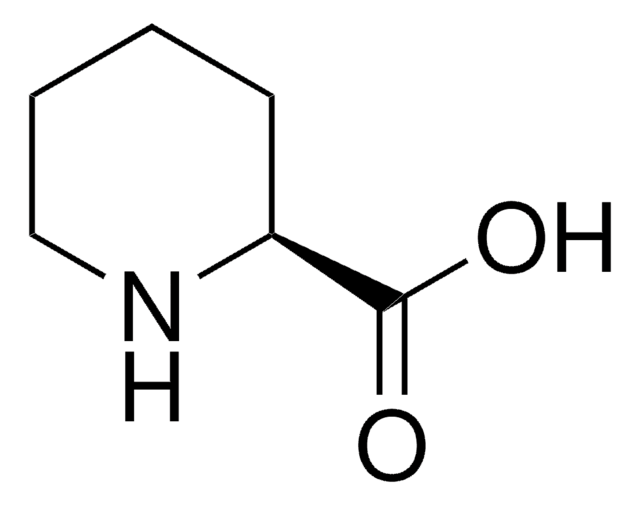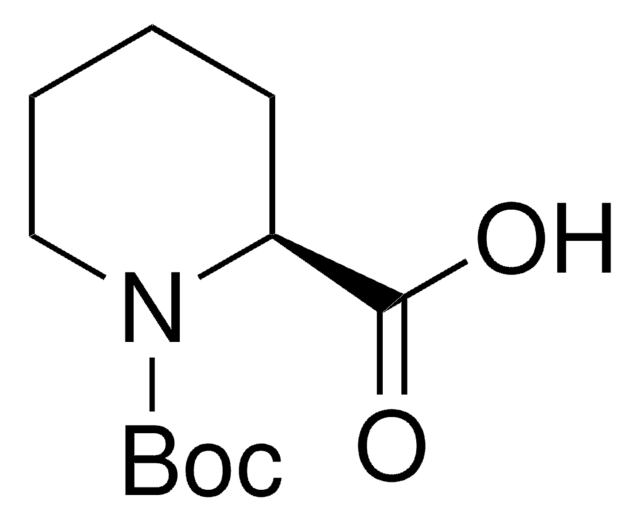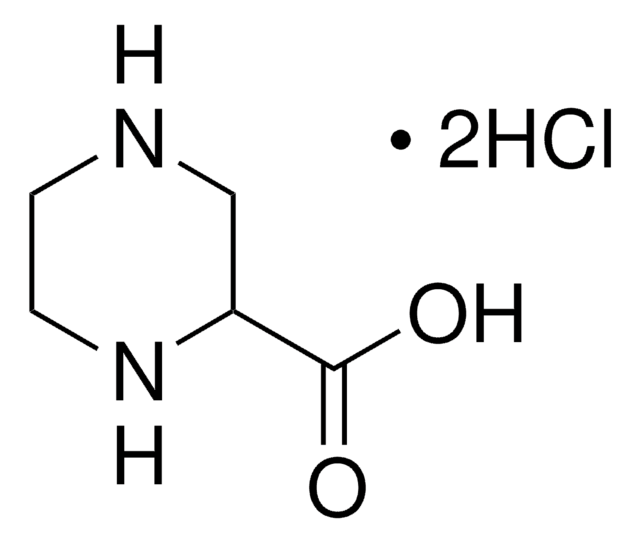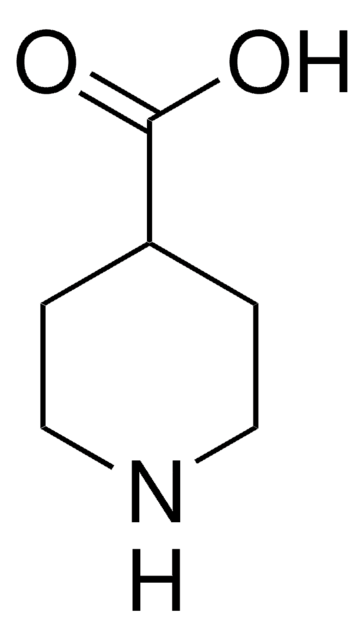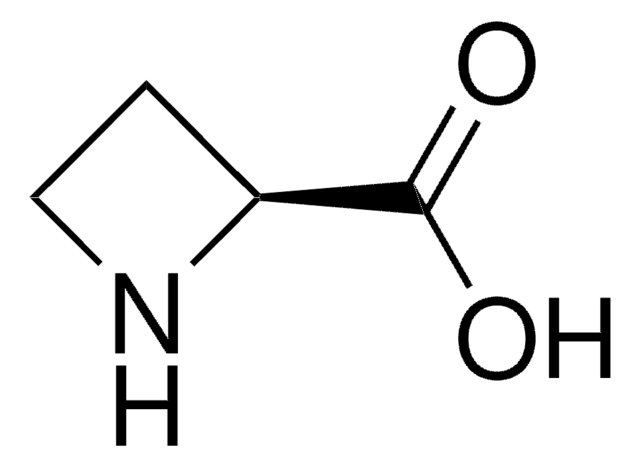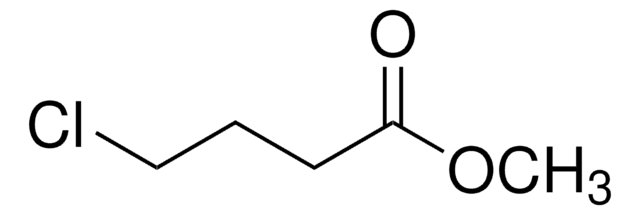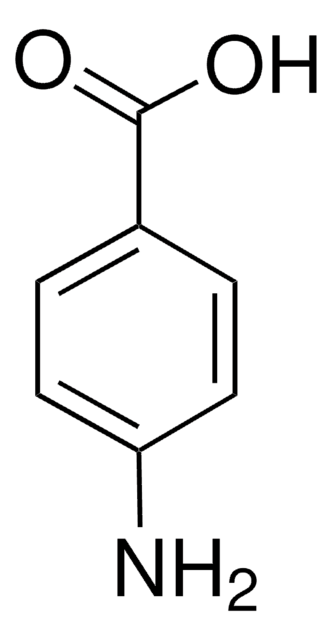P45850
Pipecolinic acid
98%, for peptide synthesis
Sinónimos:
(±)-Piperidine-2-carboxylic acid, 2-Piperidinecarboxylic acid, Homoproline, Pipecolic acid free base
About This Item
Productos recomendados
Nombre del producto
Pipecolinic acid, 98%
Nivel de calidad
Ensayo
98%
Formulario
powder and chunks
idoneidad de la reacción
reaction type: solution phase peptide synthesis
técnicas
LC/MS: suitable
color
white to beige
mp
282 °C (dec.) (lit.)
cadena SMILES
OC(=O)C1CCCCN1
InChI
1S/C6H11NO2/c8-6(9)5-3-1-2-4-7-5/h5,7H,1-4H2,(H,8,9)
Clave InChI
HXEACLLIILLPRG-UHFFFAOYSA-N
¿Está buscando productos similares? Visita Guía de comparación de productos
Descripción general
Aplicación
Palabra de señalización
Warning
Frases de peligro
Consejos de prudencia
Clasificaciones de peligro
Eye Irrit. 2 - Skin Irrit. 2 - STOT SE 3
Órganos de actuación
Respiratory system
Código de clase de almacenamiento
11 - Combustible Solids
Clase de riesgo para el agua (WGK)
WGK 3
Punto de inflamabilidad (°F)
Not applicable
Punto de inflamabilidad (°C)
Not applicable
Equipo de protección personal
dust mask type N95 (US), Eyeshields, Gloves
Elija entre una de las versiones más recientes:
¿Ya tiene este producto?
Encuentre la documentación para los productos que ha comprado recientemente en la Biblioteca de documentos.
Chromatograms
application for HPLCNuestro equipo de científicos tiene experiencia en todas las áreas de investigación: Ciencias de la vida, Ciencia de los materiales, Síntesis química, Cromatografía, Analítica y muchas otras.
Póngase en contacto con el Servicio técnico